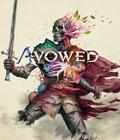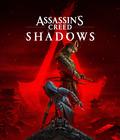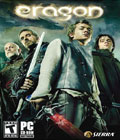Genre: Action/Flight
Publisher: Sierra
Developer: StormFront Studios
Release Date: November 19, 2006
There is no substitute for a good two-player co-op game, and throughout gaming's short history, it has remained a relatively unexplored genre. At its best, the genre thrived in arcade titles, which have long since fallen into abeyance. The popularity of Lego Star Wars has served to remind people of this genre's importance in some ways, and Eragon is a fairly obvious result of the Lego Star Wars influence.
It integrates "vehicle" and "exploration" levels, allows a second-player to start or stop playing at any time, and focuses on interpreting the license material in a fun, kid-friendly way. There are inevitable differences stemming from the fact that Eragon is an official movie game with an ironclad release date, while Lego Star Wars was essentially a game that existed as part of an expansive license line, but a comparison between the two titles still seems fundamentally fair.
As far as that goes, Eragon is the weaker game. It suffers from some problems right out of the gate, including a reliance on the now-dated engine Stormfront previously used for their Two Towers tie-in games. It interprets the fiction a bit too literally at points, resulting in some gameplay problems, and the dragon flight levels don't feel fully integrated into the title. All of this being said, it's still a superior tie-in game and worthy of a direct comparison to a tremendous title like Lego Star Wars.
Eragon seems to understand the zeitgeist behind making a family-friendly title that still offers satisfying action and important features like responsive controls, co-op, and variety in the gameplay styles. It's a game that's striking at first glance and absorbing for quick bursts of gameplay. It lacks the depth to hold a player for hours on end, but whether or not long-term play is even an appropriate goal for an official movie game or a children's game is somewhat questionable.
Eragon is appearing on the PS2, Xbox, PC, and Xbox 360 platforms. The 360 version is probably the best of them, offering exclusive bonus content that draws on the novel upon which the upcoming film is based. It's hard to judge the game against the novel at this point, as the movie is not yet in theaters, and it would make sense for a video game interpretation of either story to excise plot elements that weren't required for gameplay. Still, the basic premise is entirely intact: hapless farmboy Eragon accidentally acquires a dragon and all the power that goes with it.
Pursued by evil forces that serve a corrupt king, Eragon heads off on a sprawling adventure where the world is not exactly saved but certainly left a better place for it. He's aided first by Brom, an old and wise man with a complicated past, and then by Murtagh, a lone swordsman with a mysterious past. As the plot unfolds, player one controls Eragon while player two controls Brom or Murtagh (who have essentially identical moves). In dragon-flight levels, player two controls Saphira.
The graphics in Eragon are serviceable but sub-optimal across the platforms, with a lot of smeary textures in the on-foot forest levels. The game is initially very striking, especially the game's later levels and the dragon-flight levels, but the muddy locations of the first half of the title can grow tiresome. Once Urgals begin appearing the experience grows more interesting, and from that point onward the variety of environments, moves, and new enemy types maintain visual interest through the game's ending. The visual high point of the title are the dragon-flight levels, which feature crisp textures and cram the screen with fantastic, lifelike details. The flight levels also tend to be more colorful than the browner, more muted foot levels. Boss fights are generally gimmick battles that involve some light puzzle-solving, and frequently are among the most spectacular moments in the game.
Eragon is a game that makes excellent use of sound, from music to voice-acting to sound effects. The music sounds Hollywood authentic enough to be mistaken for tunes from the official movie soundtrack, but was apparently composed by Sierra's internal sound division. Voice-acting is used both for the standard combat grunts and shouts, but also to convey tutorial information and spice up combat with bits of characteristic spoken dialogue. For Eragon, all of his spell-casting is accompanied by the proper magical word for the spell he's using. Sound effects lend unusual weight to impacts and explosions as well. Whether the effects are imported from the films or simply were created "Hollywood-style" is unknown, but it's noticeably more interesting than what usually passes for foley in video games.
Gameplay is quite straightforward. Defeat enemies as you move throughout a level by combining different sorts of moves to create increasingly flashy combos. You can attack enemies close-up with a sword or at range with bow and arrows, and switching from one type of combat to another is quick and fluid enough for you to use both in the course of dealing with a single enemy. Eragon can, in addition, use magical powers as part of his combos, which frequently has the convenient effect of guard-breaking or incapacitating an opponent.
In the dragon-flight levels, which don't feel like they occur nearly frequently enough, the goal is usually to meet a given objective without running Safira's health down too far. The objective generally involves destroying something before something else (like Safira) takes too much damage. Eragon can fire magic arrows at enemies and Safira can breathe fire and make other sorts of direct attacks while flying.
It also, however, creates one of the more troubling gameplay elements. Virtually all of the levels are constructed to place either player one or player two into a subordinate role. This can mean situations as dramatic as player two being unable to take meaningful actions while player one solves a puzzle, or player one being reduced to tapping the "attack" button in dragon-flight sequences. This could be very appropriate if the title is played by, say, a child and a parent; in fact, Eragon seems practically designed to be played that way. But with a co-op tie-in game, it certainly should have been conceivable to make sure both players were truly occupied during certain sections of the game. The closest to this you get is Fury Mode, only activated when both players have beaten enough enemies to charge up a meter that lets them both gain enhanced defense and attack damage for a brief period of time.
In single-player, the second player activities could've been simply assumed by the AI; certainly this is how Lego Star Wars handled things. Instead, most levels are interspersed with moments where one of the two players is left doing little or nothing. In dragon-flight levels, Eragon's player can do little more than fire arrows; often in puzzles on foot, the second player cannot contribute at all. These moments are just frequent enough to disrupt the flow of co-op play, although not severely so. If chemistry with your partner is good, then you'll only notice if you happen to be the second player and find yourself putting down the controller during a puzzle. Still, it's a puzzling design flaw. Perhaps the intent was to have player two protecting player one during puzzles, and player one protecting player two in flight, but in practice, it simply feels unbalanced. It's a forgivable flaw, but one that limits the game's replay value.
Eragon is still quite fun despite its flaws. The gameplay is refreshingly direct, extremely easy to pick up and enjoy quickly, and doesn't overstay its welcome. The game can easily be completed in 10 hours, but those hours are all fresh and fun. There are no irritating attempts to pad out the game with unnecessary mandatory repetition simply because more hours of gameplay sounds better on the back of the box, which you surely would've gotten out of an Electronic Arts take on the license. Few modern games are willing to not overstay their welcome, and I'd certainly like to see this approach to design become more standard. The gameplay itself involves exactly what a game based on the Eragon license should be, and levels play out with a marvelous storybook quality to them. It may be more of a rental than a purchase for the hardcore, but it is definitely something a fan of the movie will find very enjoyable, and is the rare game that would be absolutely perfect for a parent to play with a child.
If anything, the disappointment comes from seeing how the game falls short of its full possible potential. There is an obvious commitment to quality on the part of the creators. It makes criticizing Eragon difficult, because this is an extremely well-intentioned title. Frequently, it seems like the industry's only really committed to reliable mediocrity. Eragon instead badly wants to entertain you, and the design combines many very interesting gameplay elements in an intriguing way. They didn't cohere together completely in the final product, but still result in a good, interesting title that has the untapped potential for an amazing title lurking within it. It's the sort of game that leaves you really wanting to play a sequel that might be able to get everything just perfect.
Do yourself a favor and play Eragon when it comes out, either on your own or with a friend. You'll see one of the most interesting licensed titles to have come out in quite some time, one that makes a sincere effort at doing right by both the license and the gamer. It fell a bit short of the mark at the end of the day, but chances are you will enjoy yourself and wish there was another one to which to look forward. This is more than most video games will ever manage at all, licensed or not.
Score: 7.3/10
More articles about Eragon












 Eragon is an epic fantasy-adventure which centers on a young farm boy named Eragon whose destiny is revealed with the help of a dragon. Based on the upcoming movie, Eragon, now a Dragon Rider, is swept into a world of magic and power, discovering that he alone has the power to save -- or destroy -- an Empire.
Eragon is an epic fantasy-adventure which centers on a young farm boy named Eragon whose destiny is revealed with the help of a dragon. Based on the upcoming movie, Eragon, now a Dragon Rider, is swept into a world of magic and power, discovering that he alone has the power to save -- or destroy -- an Empire.

















